1997
Accompanied by Jean-Louis Pradel in two spaces, the Cultural Center and School of Fine Arts in Cherbourg, France, Le Parc transformed the catalogue of the exhibition into a little book titled Historieta, in which a text revisiting his ideas about the role of the artist was illustrated with his drawings.
For a tango concert by Yamil in a Cherbourg theater, Le Parc created an installation with light and movement.
Works related to Le Parc’s explorations of the theme Alchemies were exhibited in several galleries across Europe.
Le Parc developed a series of experiences and scale models based on what would later become his series Torsions.
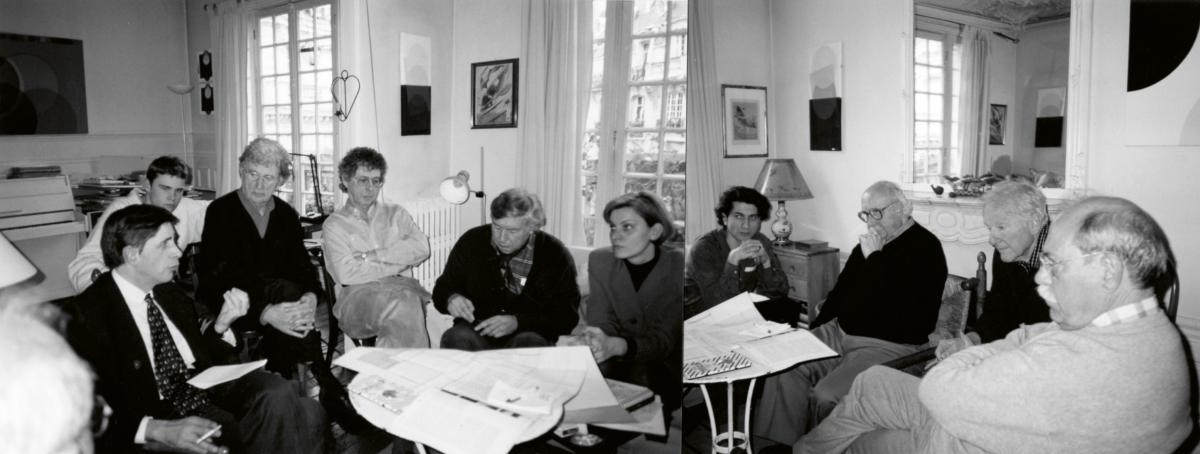 Réunion de l’ex-GRAV avec Yves Aupetitallot, Marion Hohlfeldt et Gabriel pour l’exposition historique au Magasin de Grenoble, Cholet, 1997
Réunion de l’ex-GRAV avec Yves Aupetitallot, Marion Hohlfeldt et Gabriel pour l’exposition historique au Magasin de Grenoble, Cholet, 1997 1998
Having been invited by Yves Aupetitallot to mount a major exhibit of the work of GRAV in the Centre d’Art Contemporaine in Grenoble, Le Parc, with, as usual, the collaboration of other former members of that group, gave shape to that proposal, in several meetings coordinating the content of the show, determining the layout of the works to be mounted and installed, organizing and directing the installation. The title of the exhibit was Groupe de Recherche d’Art Visuel 1960–1968 : Strategies de Participation. A very important catalogue, with precise, detailed information, accompanied the exhibit.
Le Parc took part in an encounter on sculpture organized by Gerard Xuriguera in which he created a sculpture to be installed in a park in Quito, Ecuador. In Quito a local newspaper asked him to speak on the occasion of the 30th anniversary of the May 1968 events in France. Le Parc wrote a text titled “The Hopefulness of May.”
Le Parc was asked to write a text on his friend, the fine musician Astor Piazzolla.
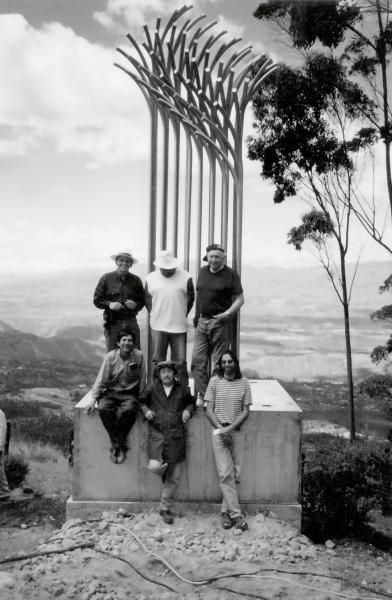 Avec l’équipe de la sculpture, 1998, Quito
Avec l’équipe de la sculpture, 1998, Quito 1999
Fábio Magalhäes, Commissioner-General of the Mercosul Biennial in Porto Alegre, Brazil, visited Le Parc and, arguing that he considered Le Parc one of the most important Latin American artists, proposed that Le Parc be the honored artist for the next biennial, and take part in it with a major solo exhibition.
Double participation : Móvil-luminoso installation in the tower of La Rochelle port and Les Années Lumières at Fort Liedot, Île d’Aix, in whose underground galleries Le Parc installed not just his Luminosas, but also an experience in which the surrounding landscape was captured by a mirror in movement and transmitted below into the interior of the exhibit. With the collaboration of Jean-Louis Pradel, a supplement to the art journal L’Oeil was published.
For the catalogue to a solo exhibit by Martha Le Parc, Le Parc wrote “Un parcours particulier” (A Particular Course).
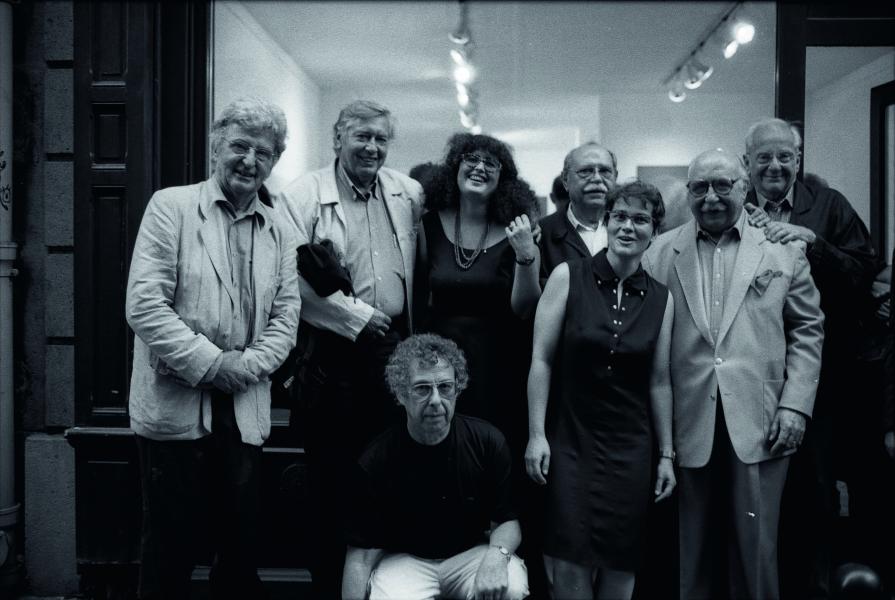 Dernière photo de l’ex-GRAV avec Lélia Mordoch, Paris, 1999
Dernière photo de l’ex-GRAV avec Lélia Mordoch, Paris, 1999 2000
For a GRAV exhibit at the Museum of Art and History in Cholet, France, Le Parc collaborated intensely on a reconstruction of the GRAV’s 1963 Labyrinthe, which is still in Cholet today on permanent exhibit.
Responding to questions from the director of the museum to GRAV former members and others on the 1963 GRAV manifesto “Assez de Mystifications,” Le Parc gave a series of answers putting himself in the place of classic personages of the art world.
The major Le Parc Mercosul exhibit traveled to Argentina—Buenos Aires, Mendoza, Córdoba, and Neuquén—leading to numerous encounters and re-encounters during the work of mounting the exhibit. This exhibit was enriched with the participation of Martha Le Parc.
 Avec Laura, Paris, 2000
Avec Laura, Paris, 2000 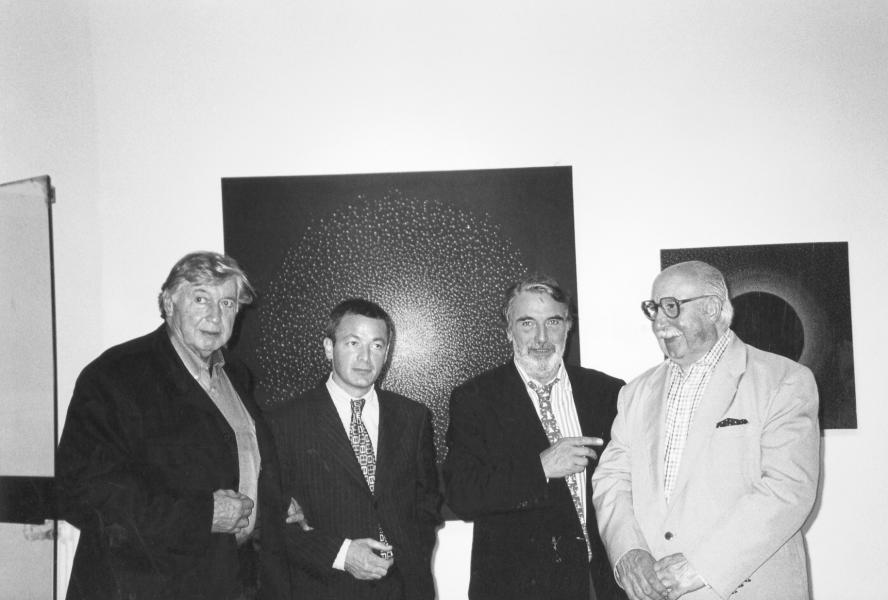 Avec Dimitri, Lavignes et Garcia Rossi, Paris, 2000
Avec Dimitri, Lavignes et Garcia Rossi, Paris, 2000 2001
Having initially collaborated with the commissioners of the Centre Pompidou in the exhibit that was finally titled Denise René L’Intrepide, but disappointed in the turn the exhibit took, Le Parc produced a polemical, ironic text titled Pamphlet, which, when Le Parc distributed it the day of the exhibit’s opening, caused the angry officials of the Centre to prohibit its circulation. Le Parc tried to present it alongside his works, but was threatened. Le Parc, with a group of supporters, returned to the exhibit and this time glued his pamphlet on top of his works, risking their removal from the show. The Centre took a step back and did not remove Le Parc’s works.
The Lelia Mordoch Gallery organized an exhibit of works by GRAV with its members in attendance. This was the moment when photographs were taken of all the members of GRAV reunited for the last time.
Le Parc’s traveling exhibit, having made its tour of Argentina, returned to Brazil—now with work by Martha—and was mounted in Belo Horizonte and the Pinoteca de São Paulo, where Le Parc included a transparent mobile-sphere measuring 6 meters wide in diameter. First solo exhibit in the Nara Roesler Gallery, São Paulo, and the beginning of a fruitful relationship.
2002
Jean-Pierre Yvaral, a close friend and one of the cofounders of GRAV, died. An exhibit in homage to him was organized. Le Parc, singly and with Alberto Biassi, García Rossi, and Demarco, exhibited in several cities in Italy.
2003
Yvonne Argenterio, owner of a factory working in stainless steel in Brescia, Italy, proposed a technical collaboration with Le Parc to create a project for a personal event to be held on her estate in Boldeniga, an event similar to one done earlier with Alberto Biassi. Le Parc, enthusiastic with the idea, saw the opportunity to give shape to his 1997 projects.
On a trip to Buenos Aires to reinstall one of his works at the San Martín Cultural Center, Le Parc organized several days of encounters, information, and confrontation with many groups of artists that had emerged in reaction to the great Argentine economic crisis of 2001—the so-called Corallito—and also with groups fighting against the impunity of the police and military officers responsible for the crimes of the military dictatorship. Le Parc was disappointed that the filmed and recorded material could not be made into either a video or print record.
2004
Le Parc took part in the emblematic exhibit Inverted Utopias: Avant-Garde Art in Latin America, curated by Mari Carmen Ramírez. His work was also exhibited in the show MoMA at El Museo [del Barrio]: Latin American and Caribbean Art from the Collection of the Museum of Modern Art at the Museo del Barrio, New York.
During that year he produced his open-air sculpture series Torsions, which with other works (from the series Luz/Light) were included in his solo exhibit Verso la Luce in the gardens of the Castello di Boldeniga in Brescia, Italy.
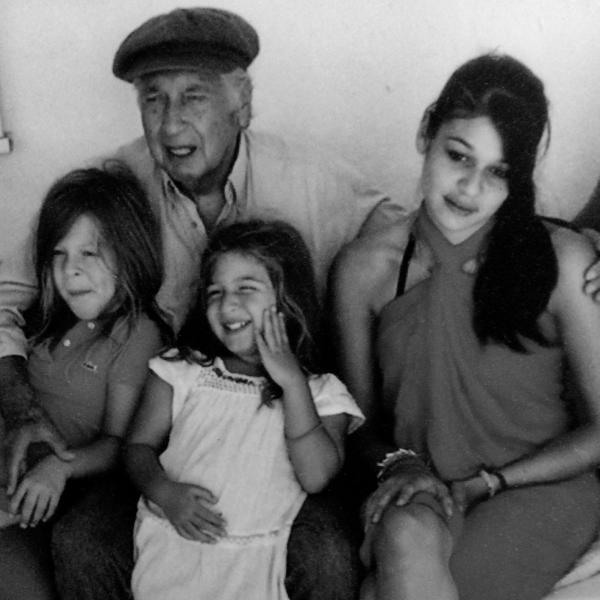 Avec Alma, Iman et Luna, Cachan, 2004
Avec Alma, Iman et Luna, Cachan, 2004 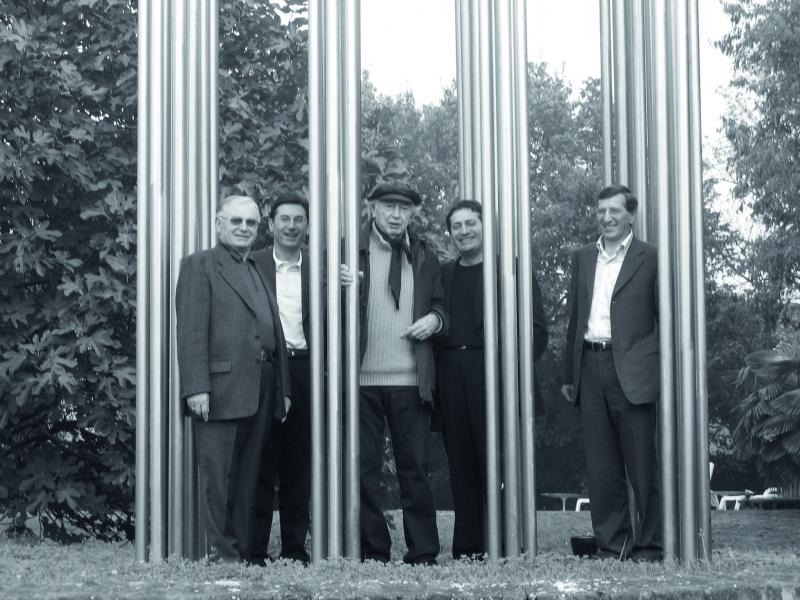 Avec les frères Luchetta, Boldeniga, 2004
Avec les frères Luchetta, Boldeniga, 2004 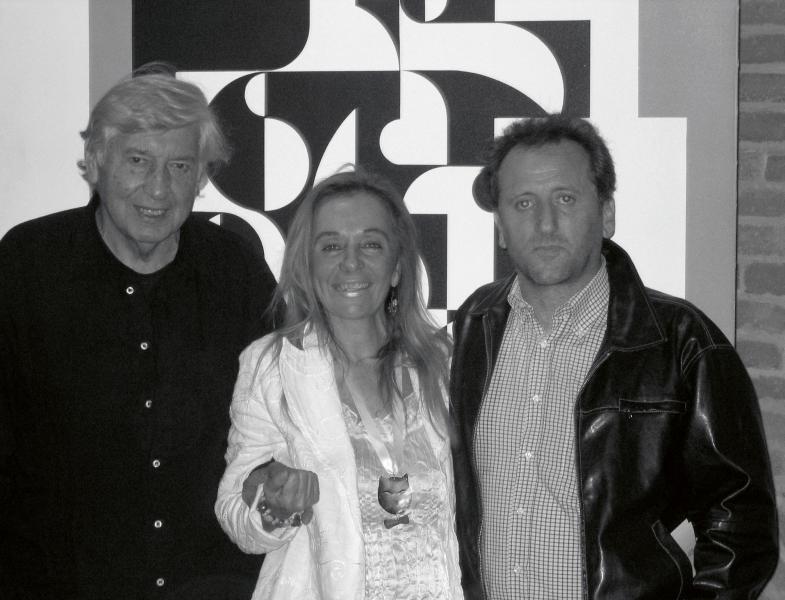 Avec Yvonne et Severgnini, Boldeniga, 2004
Avec Yvonne et Severgnini, Boldeniga, 2004 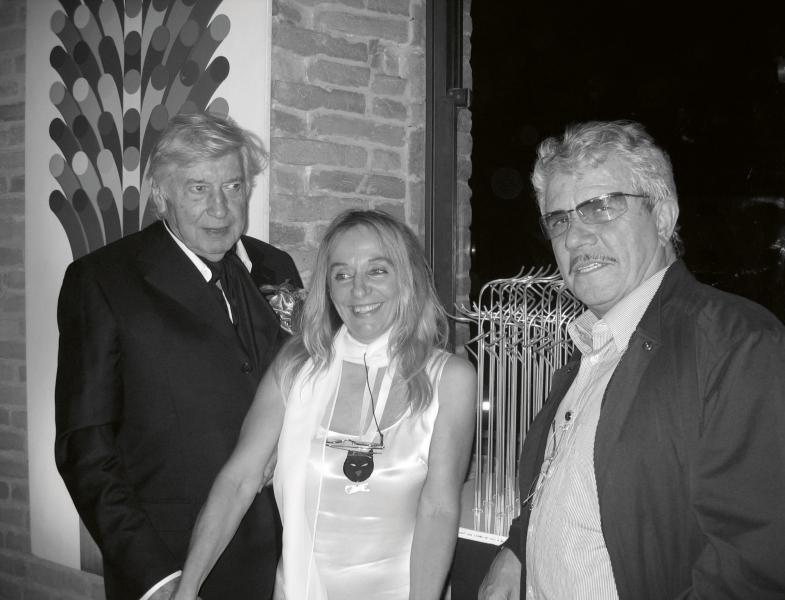 Avec Yvonne et Alberto Biasi, Boldeniga, 2004
Avec Yvonne et Alberto Biasi, Boldeniga, 2004 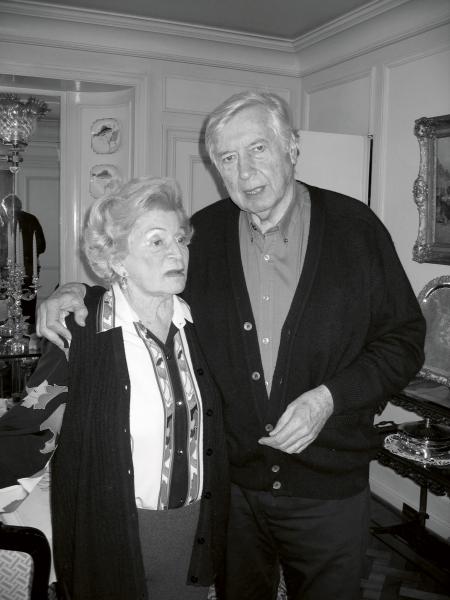 Avec sa tante Edith, Buenos Aires, 2004
Avec sa tante Edith, Buenos Aires, 2004 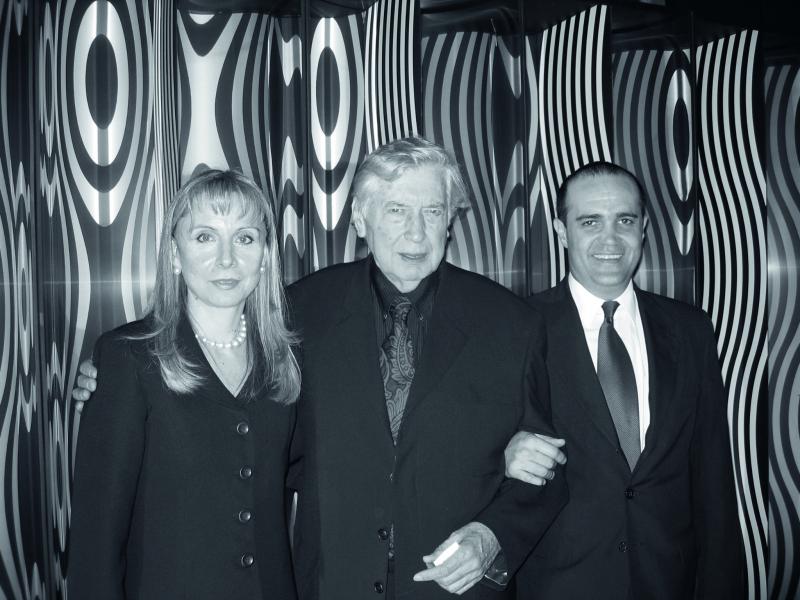 Avec Maria Victoria Alcaraz et Sergio Massetti. Centre culturel San Martin, Buenos Aires, 2004
Avec Maria Victoria Alcaraz et Sergio Massetti. Centre culturel San Martin, Buenos Aires, 2004 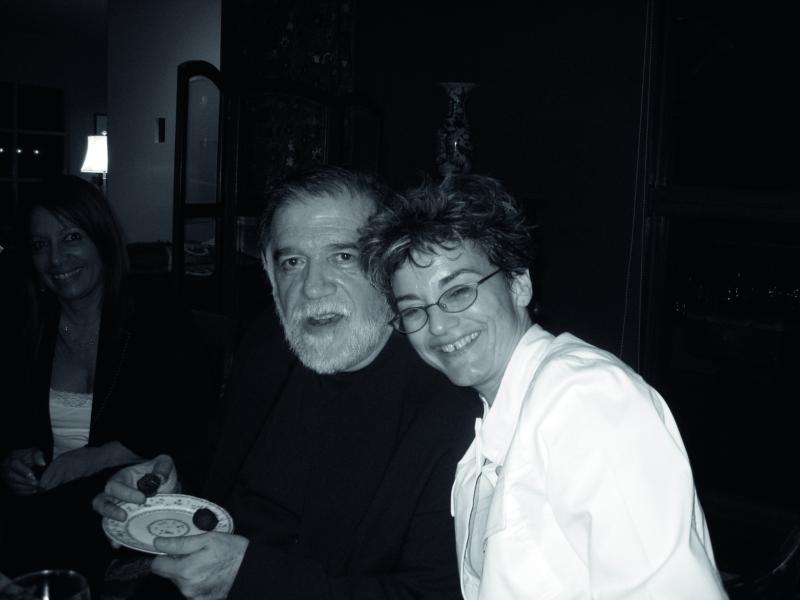 Maria Carmen Ramírez, Houston, 2004
Maria Carmen Ramírez, Houston, 2004 2005
In Boldeniga, Le Parc continued to develop a new theme within the Modulations family.
Le Parc was invited to mount an exhibit with Biassi in the Casa del Mantegna in Mantova, Italy. Due to a strong disagreement with the organizer, Le Parc responded vigorously to the abnormal situation.
An exhibit of Le Parc’s Luminosas in the Orangerie in Cachan led to a collaboration with a musician and two actresses (one of them Cecile Magnet) to create a spectacle of poetry and light titled Vertige vertical (Vertical Vertigo) based on poems by the great Argentine poet Roberto Juarroz.
Hans Herzog, having seen Le Parc’s work at Mercosul, visited Le Parc in his studio in Cachan to purchase some works for the Daros-Latin American Collection, of which he was the director.
Le Parc Lumière (Daros) became a very successful exhibit in Zurich. Le Parc had dedicated great time and energy to this exhibition, working with Eduardo Rodríguez, an Argentine friend from his youth and a very fine Kinetic artist. Daros produced a large-format book titled Le Parc Lumière, published by Hatje Cantz, which focused on Le Parc’s concerns with light throughout his artistic career. During the exhibit, Daros organized a workshop for children and the general public, for which Le Parc contributed many ideas.
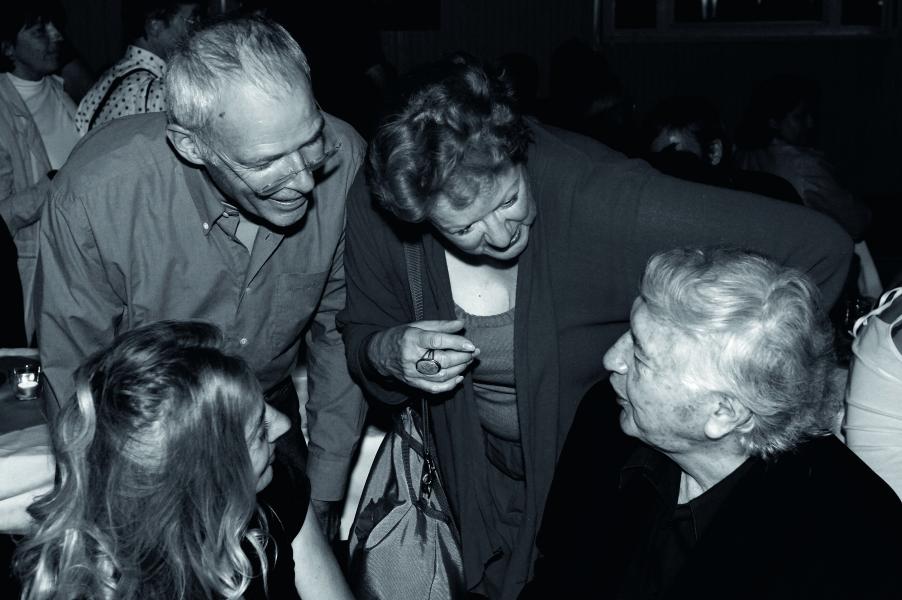 Avec Jacob Bill et son épouse, Zurich, 2005
Avec Jacob Bill et son épouse, Zurich, 2005 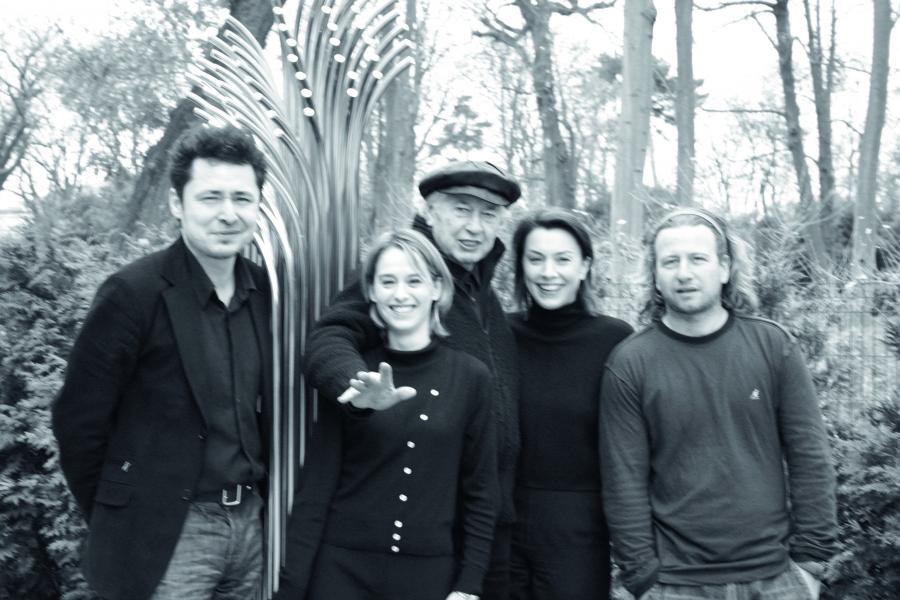 Avec l’équipe de Vertige Vertical, Cachan, 2005
Avec l’équipe de Vertige Vertical, Cachan, 2005  Avec Eduardo Rodriguez, Zurich, 2005
Avec Eduardo Rodriguez, Zurich, 2005